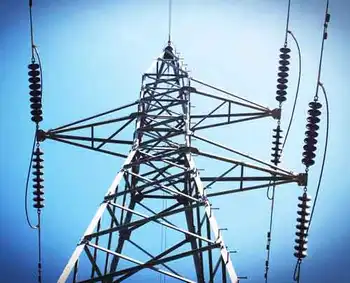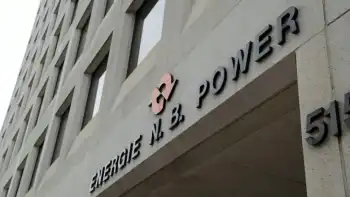Nuclear solution comes with a huge price tag
It is not public apprehension about safety or disposal issues this time, but the staggering cost of building nuclear reactors.
A wave of new reactors now in the works is intended to solve at least part of the nation's energy problems as it attempts to shift away from fossil fuels. But cost is likely to plague every upcoming nuclear project.
In Missouri the first of the next generation reactors was put on hold because of the $6 billion price tag.
Whether or not AmerenUE's Missouri reactor was a casualty of the current economic climate, the legal fight in several states shows how big the cost hurdle will be.
Some states have altered laws so that consumers begin footing the bill now, even before construction begins. Missouri did not.
"A large plant would be difficult to finance under the best of conditions, but in today's credit constrained markets, without supportive state energy policies, we believe getting financial backing for these projects is impossible," Thomas Voss, AmerenUE's president and chief executive.
Reactors were expensive even 40 years ago at around $1 billion. The cost of AmerenUE's Missouri project dwarfed even the market value of its parent company.
The cost of labor, raw materials and technology have all grown exorbitantly. Because much of the new technology and building techniques are untested in the U.S., construction will be lengthier, more expensive and riskier, according to a report issued by Standard & Poor's.
Residential electricity rates would have risen 1 percent to 3 percent annually for AmerenUE customers, up to 12.5 percent during construction, then actually dropped once the plant was in operation. A coalition of business and senior groups ran ads claiming rates could have increased 40 percent.
Including AmerenUE's proposal, 18 companies say they want to build at least 26 reactors that would cost $6 billion to $8 billion apiece, according to the Nuclear Energy Institute.
As many as eight new nuclear plants are supposed to come on line by 2016, said the NEI's Richard Myers. That is the beginning of what is expected to be a massive rejuvenation of the nation's electric system which, in human terms, is approaching its golden years.
About 45 percent of the nation's generating capacity infrastructure is at least 30 years old and one-third of the coal-fire generation is 40 years old. The U.S. has 104 nuclear plants that generate about a fifth of the nation's electricity.
"These are big projects, they definitely serve a national need," said Myers.
Demand for electricity is expected to grow 21 percent by 2030 and the ability to meet demand even now is problematic.
Construction will undoubtedly play out on your utility bill.
That cost, critics say, is too great and there are better ways to power homes.
"It is so phenomenally costly that it crowds out capital needed for energy efficiency and renewable energy," said Mark Haim of Missourians for Safe Energy, a group that has been fighting Ameren's plans.
Yet Republican lawmakers in Washington want more government funding for nuclear power.
In a weekly radio and Internet address over the weekend, Sen. Lamar Alexander, who sits on the appropriations subcommittee on Energy and Water Development, said the U.S. should build 100 more nuclear plants rather than spend "billions in subsidies" for renewable energy.
He pointed out that nuclear plants provide 80 percent of France's electricity, and the country has one of the lowest electric rates and carbon emissions in Europe.
The nuclear energy industry lobbied hard for $50 billion worth of federal loan guarantees, but that was stripped from the stimulus bill.
So states are revamping laws to help raise money.
Florida and Georgia have already done so and Oklahoma is studying the idea.
AmerenUE cited the failure of Missouri to alter its laws for backing out of its nuclear project, for now.
Utilities say allowing them to charge consumers before reactors are built, rather than after, will save hundreds of millions in financing costs, which would also have to be paid by consumers.
In Georgia, customers of Georgia Power, a subsidiary of the Southern Co., will pay $1.30 extra a month beginning in 2011. However, to cover the cost of two new nuclear reactors that will cost $14 billion, consumers will be paying an extra $9.10 a month by 2017.
Because the utility is allowed to collect money before the plants are on line, rates will increase by 9 percent, compared with the 12 percent they would jump if rates were raised only after completion, the company said.
Florida's largest utilities hiked rates this year under a state law meant to encourage investment in nuclear power, rather than plants that burn coal and gas. The law is expected to save Progress Energy $13 billion in interest costs over the expected 40-year life of two planned reactors.
Some legislators were caught off guard when one of those utilities, Progress Energy, which has about 1.7 million customers in central and north Florida, raised rates by $11.40 per month for 1,000 kilowatt hours, slightly less than what a typical consumer uses. At the same time, Progress said the cost of fuel was going up, meaning overall rates were set to jump about 25 percent at the beginning of the year.
Progress has since cut the nuclear rate charge for this year to $3.62, and fuel costs have fallen.
No matter the charges, Americans will need to get used to paying more for electricity, and not just because of nuclear power. By Myers' estimates, rates that typically run about 9 cents a kilowatt hour figure to double over the next several years.
The investment in new nuclear plants is just a fraction of the $1.5 trillion to $2 trillion that utilities and power generators — about five times the current market valuation for these companies — will spend by 2030 on new power generation, transmission, energy efficiency, smart meters and environmental controls, Myers said.
"You can't have low prices and at the same time hope to maintain reliable service and clean low-carbon electricity," Myers said.
Related News

TC Energy confirms Ontario pumped storage project is advancing
TORONTO - In a bid to accelerate the province's ambitions for clean economic growth, TC Energy Corporation has announced significant progress in the development of the Ontario Pumped Storage Project. The Government of Ontario in Canada has unveiled a sustainable road map aimed at achieving an emission-free electricity sector, and as part of this plan, the Ministry of Energy is set to undertake a final evaluation of the proposed Ontario Pumped Storage Project. A decision is expected to be reached by the end of the year.
Ontario Pumped Storage is a collaborative effort between TC Energy and the Saugeen Ojibway Nation.…





